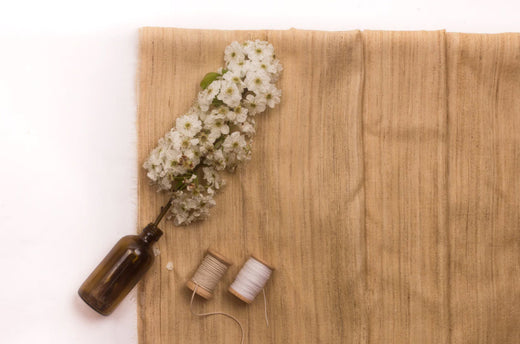
The Ahimsa way of life through Ahimsa Silk
Who says silk always has to be made by killing and harming silkworms and the environment? This hazardous method of killing silkworms to produce silk was changed in the early 2000s when one introduced ahimsa Silk; The word "ahimsa" itself derives from Sanskrit and translates as "noninjury". Ahimsa is an essential ethical belief of three major religions: Hinduism, Jainism and Buddhism. It guides us not to harm any other living things.
Ahimsa Silk is known as peace silk, cruelty-free silk and non-violent silk, which refers to any silk produced without harming or killing the silkworms.
Whereas conventional silk requires boiling of the cocoons, or it is steamed or dried in the sun that kills the silk larvae inside.
So the time when the silkworms were brutally killed to produce silk fabrics, one thought of a way to make the material more meaningful by creating a non-violent method. This method involves creating this silk without killing the worms or waiting till the worm's life cycle ends.

The process of Ahimsa Silk:
We acquire conventional silk by boiling, drying, or killing the silkworms; ahimsa silk doesn't demand that. We obtain ahimsa silk without killing the silkworms; one waits until its life cycle completes naturally. When they grow in four weeks, the silkworms start oozing liquid from their glands to form an oval shape cocoon. In 8 to 10 days, the silkworm grows into a silk moth, which leads to the silkworm oozing a liquid to soften the cocoon and pierce through it naturally.
Once this process completes, the cocoons and the moths are separated by hand without harming the moth. Then the silk is extracted from the broken cocoon by boiling them; this silk is spun into yarn, which is why ahimsa silk is softer than regular silks.
This is why ahimsa silk is around double the price of regular conventional silks, as it yields the best quality. The fabric created from yarns of regular silk's texture is like paper; it is thin, and neither does it absorb sweat nor permit air, whereas it's the complete opposite with ahimsa silk.
According to PETA, 3,000 silkworms are killed to produce one pound of silk; and 10,000 silkworms to make one silk sari.
Whereas in Ahimsa silk, no silkworms are harmed; the quality is much better, like owning luxury. It is soft like butter to touch; it absorbs sweat and permits air. So, isn't the price worth it when you get luxury in return, without harming our mother nature?
Also, today you have varied options in Ahimsa silk, such as Tussar silk, Mulberry silk, Eri silk and Muga silk. These silks follow the practice of peacemaking without causing any harm to nature and its living creatures. So, why not opt for the better?
We all feel that one has to make drastic changes in lifestyle and purchases to make a sustainable change, but it is not valid; one can start with minor modifications by purchasing ahimsa silk over conventional silks. Imagine the number of silkworms that we can save by making this change.

